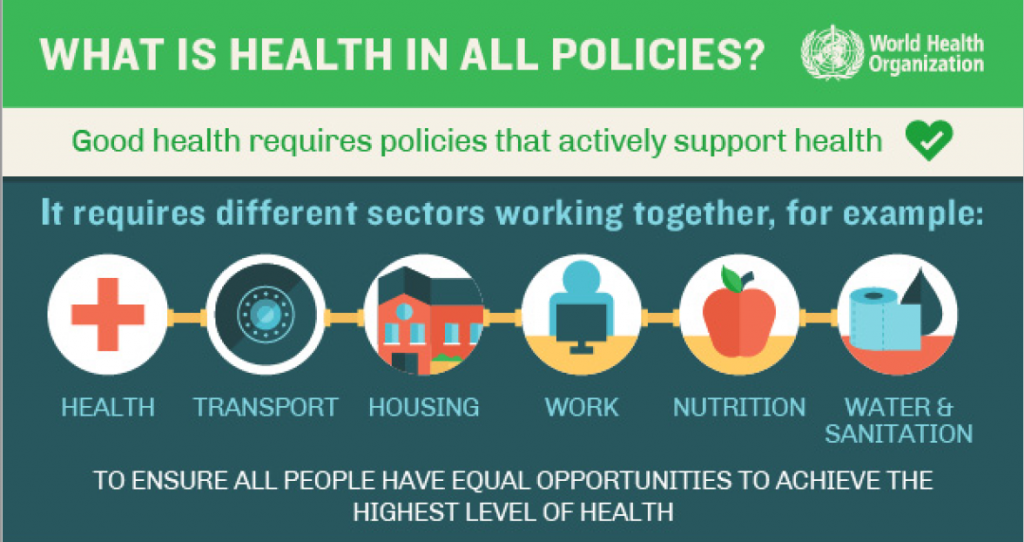The need for effective and sustained collaborative action is inherent for the achievement of the Sustainable Development Goals (SDGs). The interconnected nature of the goals calls for strong partnerships and cooperation if improvements in human and planetary health, peace and prosperity are to be realised. This has been recognised by the United Nations whereby partnerships have been prioritised through the focus of Goal 17 (Partnerships for the goals). The implementation of all 17 SDGs is dependent on coherent and integrated action, which positions partnerships as a critical cornerstone of the 2030 sustainable development blueprint.
Forming collaborative partnerships is often “easier said than done”. It requires a fine balance between technical skills and content knowledge, and political intuition and emotional intelligence to grow and fine-tune a successful and meaningful partnership. The Health in All Policies (HiAP) approach offers a useful strategy and tool-kit for brokering and facilitating not only partnerships but embedding governance into intersectoral collaboration. Governance is a critical element that underpins HiAP practice. Governance provides a mandate for working together, and the accountability and commitment required for cross sector policy-making and program delivery. In particular, horizontal governance can be a powerful mode for action if harnessed with care and diplomacy. Such lessons from HiAP practice can be translated to support the 2030 agenda.
An increasing number of countries are initiating and implementing HiAP approaches. In the era of the SDGs, there is a timely opportunity to gain a broader perspective and deeper understanding of HiAP practice. The Global Network for HiAP (GNHiAP) was established for this purpose. The network’s membership has continued to expand since it commenced in May 2017. In the spirit of HiAP, it is represented by government, non-government and academic institutions from across the world. The group has committed to strengthening HiAP across regions as a mechanism for increasing intersectoral collaboration and reaching the sustainable development goals.
New HiAP models are beginning to emerge and the more established HiAP approaches are evolving. To take stock of current practice, the GNHiAP is developing a Global Status Report on HiAP to be released at the World Health Assembly in 2019. The report will capture baseline information on HiAP practice around the world through a thematic analysis. It is hoped that the report will spur discussion and advocacy about the opportunities and challenges for HiAP implementation and, in turn, support collaborative policy-making for the achievement of the SDGs.
This article has been written by Claudia Galicki and Carmel Williams from the Health Determinants and Policy team in the South Australian Department for Health and Wellbeing. The views expressed by the authors are not necessarily those of the South Australian Government.


